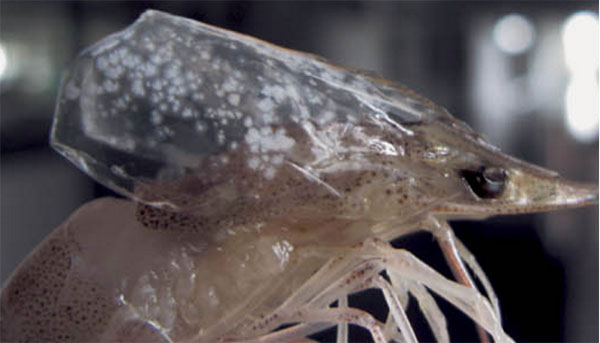For the day, the white spot syndrome virus (WSSV) is considered the most dangerous disease for the shrimp industry. Once the disease has occurred, it needs to harvest immediately. So, what should you do to protect shrimp against white spot disease?

Choosing the time of stocking and the postlarvae shrimp
– Avoiding stocking shrimp in the off-season (cold season or period of unusual temperature fluctuations)
– Selecting the reputable hatchery with the control of the broodstock input quality and postlarvae output. If possible, ask the hatchery to nurse seven consecutive days before selling at 32 degrees Celcius. At that time, the postlarvae will not carry white spot disease (Chalor Limsuwan professor).
– Sending samples to check postlarvae before buying. Note that a negative result does not mean that the shrimp does not carry the disease because the PCR test only detects the virus with a certain threshold.
– If stocking many ponds, farmers should divide postlarvae into several batches and use different hatchery sources. It reduces the risk of the disease co-occurrence.
Actively prevent disease throughout the farming process
– Killing all crustaceans such as crabs and wild shrimp, which are capable of carrying white spot disease.
– Setting up a fence to prevent crabs around the pond and a net to avoid birds covering the entire pond.
– Carefully managing the pond environment in the first 45 days. Most of the ponds infected with white spot disease have the appearance of toxic gases in the preparation stage due to poor pond renovation, unstable algae growth, dead bottom algae, and poor nutrition. Toxic gases such as NH3, NO2, and H2S make shrimp weak and susceptible to diseases. Also, white spot disease breaks out when the temperature is under 28 degrees Celsius. It is a difficult period for shrimp as transferring from a well-tended nursery to farmed pond with many changes.
– Limiting frequent water changes in the pond during the farming process. It should use the initial water supply, periodically supplement microorganisms to the pond, and add treated water if necessary.
– It is not to use tools such as shrimp nets, and dinghy together to avoid spreading pathogens between ponds. If shared, the tools must be sterilized and dried a day before. In addition, after wading into the pond, it should be clean and not touched with food or wade into another pond.
– It is necessary to actively stop the microbiological process when ponds on the farm or surrounding ponds inflect with white spot disease. Then, using Virkon® A disinfectant at a dose of 1 to 1.2 kilograms per 1000 cubic meters of water to remove pathogens that may have been spread by water, crabs, birds, or shared tools into the pond. In addition, mixing capsule vitamin C (Aqua C®) into the feed increases shrimp’s resistance and improves the environment (reducing toxic gases and stabilizing alkalinity) during infection time.
Depending on specific conditions, farmers need to make efforts to implement the above measures. Currently, hatcheries in Vietnam do not guarantee the postlarvae quality in the first month after stocking like in Thailand. Therefore, farmers should focus more on managing the pond environment to minimize the risk of white spot disease.
References

 Tiếng Việt
Tiếng Việt 中文 (中国)
中文 (中国)